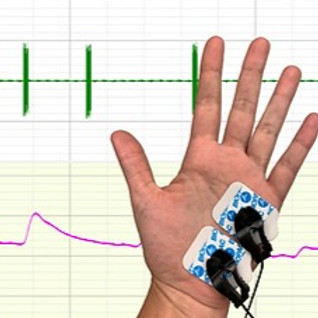
Methods

THE GRADY TRAUMA PROJECT
Methods
The Grady Trauma Project uses a variety of measures in order to further our understanding of PTSD and the impact of trauma. Participants in our studies are enrolled on a voluntary basis and all personally identifiable information is removed from any data gathered from these methods. Read below to find out about some of the main methods we use.
Clinical Interviews
Clinical interviews are used to learn how people react to stressful life events and to help them cope. They consist of questions regarding life situations and medical history. All answers are confidential and identified by a number (not names) to protect the privacy of our participants.

MRI
Magnetic Resonance Imaging (MRI) uses a large magnet to take detailed internal pictures of the body and brain. By looking at the magnetic properties of blood in the brain, functional MRI can be used to observe brain activity.

TMS
Transcranial Magnetic Stimulation (TMS) is a non-invasive way to stimulate the brain using a series of brief magnetic pulses. It is used as a treatment for Major Depression and is being studied for treating Post Traumatic Stress Disorder
.jpg)
Startle Assessment
People who experience trauma may have a bigger reaction to certain stimuli. A startle assessment is a test to measures these reactions to a sudden administered stimulus, such as a sound or puff of air.


Behavioral Testing
We use a variety of questionnaires to collect information on behavior. These help us answer important questions about how behavior and biology are connected.

Skin Conductance
In response to a threat, the body responds by increasing sweat levels. This fight or flight response can be measured by placing two electrodes on the palm or fingers of one hand and recording the electrical properties of your sweat.

EEG
Electroencephalography (EEG) records surface level brain activity with electrodes that are placed on the scalp of the head. These electrodes pick up electrical brain activity and can be used to detect patterns in the brain.
.jpg)
Blood Draw
Several ounces of blood are drawn from a vein in the arm using a needle. The blood is collected into tubes and used to measure hormone levels in the body. All blood samples are identified by a number (not names) to protect the privacy of our participants.
